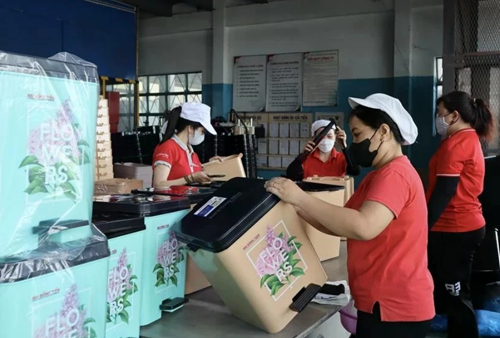Nguyen Truc Van, Director of the Center for Socio-economic Simulation and Forecast under the Ho Chi Minh City Institute for Development Studies, told reporters in response to businesses' concern about the 46% reciprocal tariff for imports from Vietnam announced by U.S. President Donald Trump.
    |
 |
|
Workers at Dai Dong Tien plastic company in Ho Chi Minh City label and package products. |
To help enterprises effectively respond to the new U.S. tariff, municipal authorities will step up support by providing timely information, surveying markets, and studying benefits of free trade agreements to help businesses proactively developing products tailored to market demand, the official stated.
Training programs to improve international business skills, trade promotion efforts, and cross-border e-commerce initiatives will also be implemented to help firms diversify export markets.
She went on to say that enterprises can leverage holidays, particularly long holidays such as the Hung Kings' Commemoration Day and the Reunification Day holidays, to stimulate tourism, encourage consumer spending, and enhance investment promotion, helping boost Vietnamese brand recognition among domestic consumers.
In response to the new situation, many enterprises in HCM City said that they are proactively exploring new markets beyond the traditional U.S. market. They are also diversifying their product offerings tailored to various customer segments across different countries.
Although shifting production strategies is not something that can happen overnight, many companies have long been implementing such adjustments to cope with global trade fluctuations. The most pressing challenge at present is the possible immediate impact of the new tariffs on production activities, cash flow, and goods, which could place immense pressure on business operations, Van noted.
According to the municipal People’s Committee, the city's export turnover reached 11.7 billion USD in the first quarter of this year, up 5.55% year-on-year, while imports rose by 15% to 15.6 billion USD. Many businesses have secured sufficient export orders to fulfil through the second quarter, indicating a recovery in consumer demand.
However, the latest tariff move by the U.S. is considered a significant blow to Vietnamese goods in general, and to HCM City’s exports in particular, as the U.S. remains the largest importer of Vietnamese goods, accounting for 30% of the Southeast Asian country's total export value.
Source: VNA